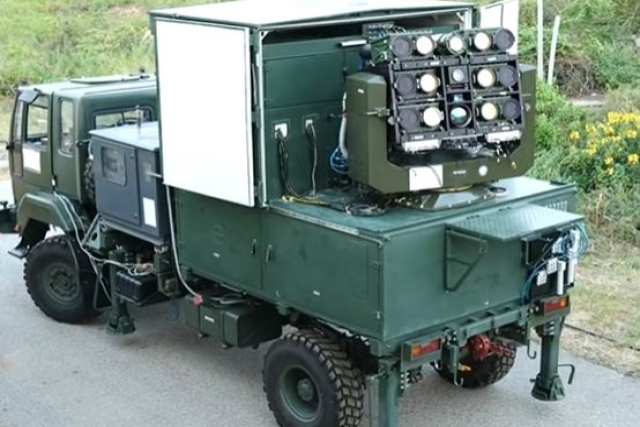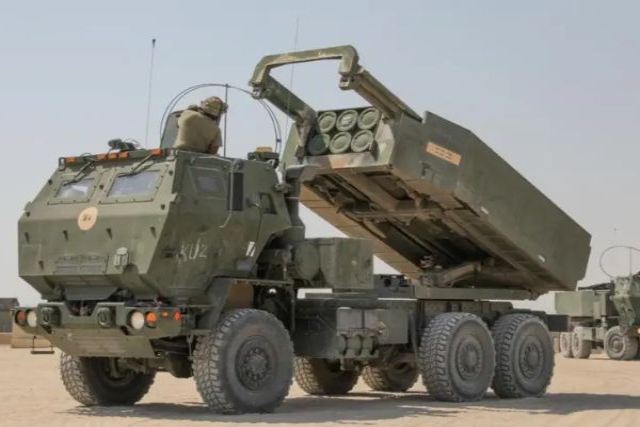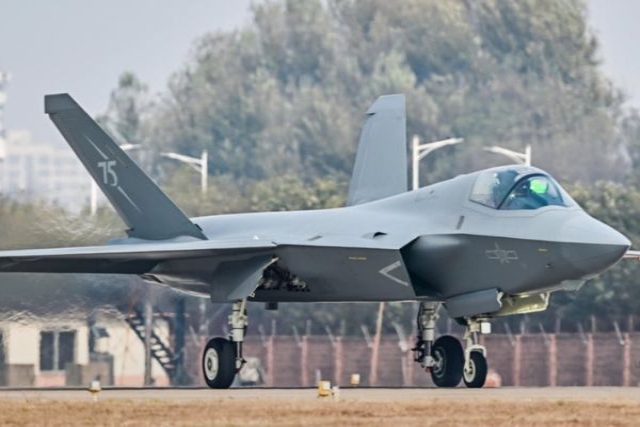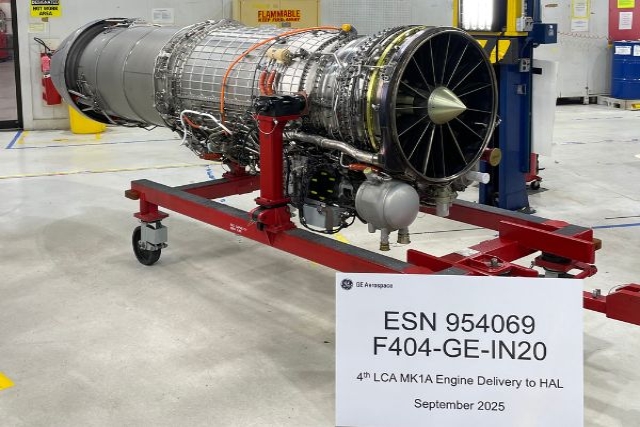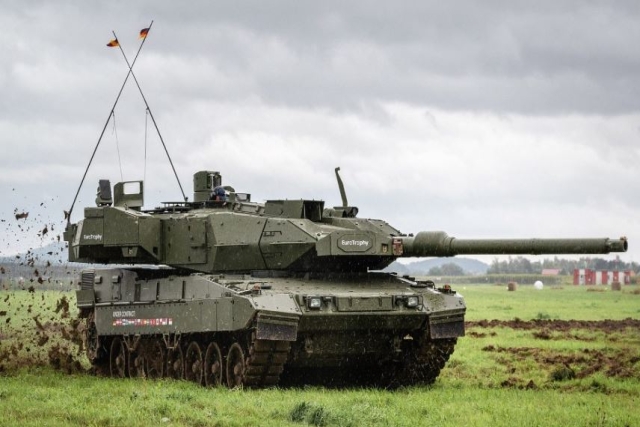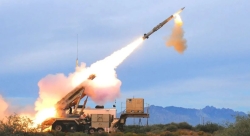The Future of Combat: Miniaturized Laser Weapons Set to Replace Bullets and Missiles
Lasers are reshaping warfare as nations race to deploy compact weapons that shoot down drones, disable missiles, and replace bullets with beams.
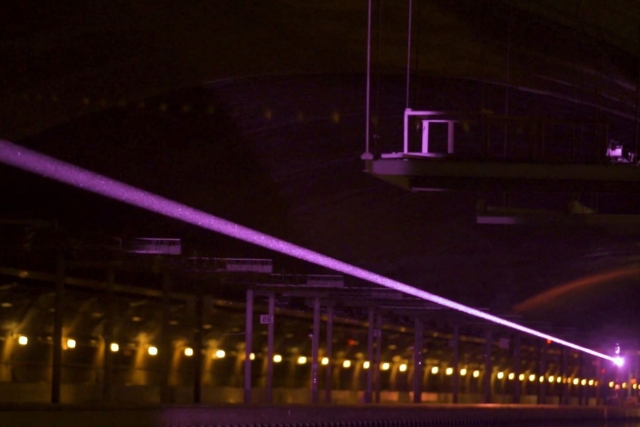
Lasers may soon replace bullets, and drones could disable enemy UAVs with beams of light instead of missiles. Directed-energy weapons (DEWs) are rapidly changing military defense by targeting threats like drones and missiles with precision and lower costs.
Advances in laser technology—such as fiber, semiconductor, and solid-state lasers—have enabled compact, mobile systems. Fiber lasers offer high power in durable designs, while smaller semiconductor lasers are used for tasks like range finding. Improved materials and diode-pumping have made solid-state lasers more portable.
Miniaturization has expanded deployment. Troops now use handheld lasers for range finding or in some cases as weapons. Vehicle-mounted systems are being installed on ground vehicles, helicopters, and ships. Drones can carry laser payloads with minimal impact on performance.
Lasers now support target acquisition, guidance, communications, and surveillance. High-power variants are being developed to disable drones, sensors, and munitions. Some are even tested for engineering uses and mine clearance.
From soldier-carried tools to ship-mounted systems, DEWs are becoming integral to defense strategies across land, air, and sea. Nations are racing to field these systems as cost-effective, precise alternatives to traditional weapons.
General Atomics' MQ-9B Drone Gets a Laser Upgrade
In April 2025, General Atomics unveiled a breakthrough in drone warfare with the launch of a high-energy laser combat module for its MQ-9B Reaper drone. The module, mounted under the drone’s wing, is equipped with a High Energy Laser Weapon System (HELWS) capable of delivering up to 300 kilowatts of power. This laser can rotate independently of the aircraft, enabling the drone to target threats without changing its flight path.
General Atomics’ move to incorporate laser technology into drones aims to counter low-cost aerial threats like enemy UAVs and cruise missiles. By replacing traditional missiles with lasers, the company aims to reduce operational costs and avoid the use of expensive munitions. This innovation builds on the success of previous demonstrations, such as the "Tryzub" laser complex tested by Ukraine, which proved effective against drones and other aerial threats.
The prototype Tryzub laser neutralizes a range of airborne threats, including drones, missiles, and aircraft, with different operational ranges. It can disable strike drones, bombs, and missiles at up to 3,000 meters, helicopters and aircraft at up to 5,000 meters, and target optical systems at up to 10,000 meters. Demonstration footage showed the laser disabling a drone's camera. The system uses an optoelectronic station for targeting, with manual control via joystick, but future versions will feature full automation. A version of Tryzub is also mounted on the Alligator 9 surface drone, indicating potential naval applications.
German Firms Collaborate on Ship-Based Lasers
In January 2025, German companies Rheinmetall and MBDA Deutschland formed a joint venture to develop ship-based laser weapons. The companies have previously collaborated on laser technology, conducting trials between 2022 and 2023 aboard the German Navy's frigate Sachsen. These trials demonstrated the laser's ability to counter UAVs, drone swarms, and small boats at short ranges. In September 2023, they formalized their cooperation to develop laser systems for ships. The demonstrator has a 20 kW beam output, achieved by combining 12 fiber laser modules. Its modular design allows for scalability, potentially reaching 100 kW. The system successfully engaged threats in over 100 shots, with potential upgrades to counter advanced threats like hypersonic missiles.
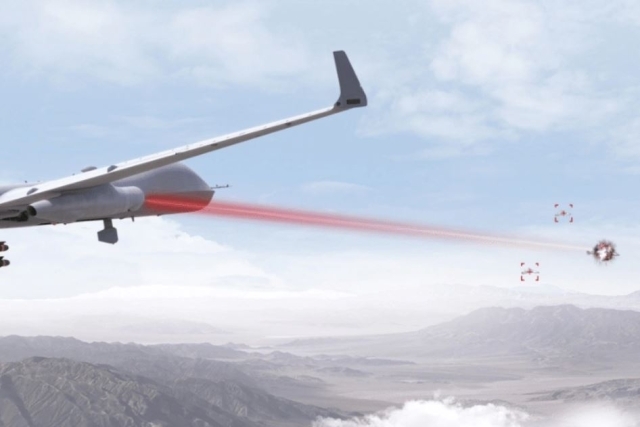
U.K. Military Tests High-Energy Laser Weapon
In July 2024, Raytheon U.K., with Dstl and DE&S, tested the High-Energy Laser Weapon System (HELWS) on a British Army Wolfhound armored vehicle at Dstl's Porton Down range. The system, designed to defeat NATO Class 1 drones, was fired at full power in a key milestone of the Ministry of Defence’s Land Laser Directed Energy Weapon (LDEW) Demonstrator programme. The Raytheon system can track and engage targets on a vehicle. Already combat-certified with U.S. forces, it has over 40,000 test hours and has downed over 400 targets. The next phase will see British Army soldiers refining capability requirements.
British Army Tests Radio Frequency Directed Energy Weapon
In December 2024, the British Army tested a radio frequency directed energy weapon (RFDEW) in Wales, capable of neutralizing drone swarms at around 10p per shot. Trialed by the Royal Artillery Trials and Development Unit and 7 Air Defence Group, the RFDEW targets threats over one kilometer using high-frequency radio waves to disable drones. It can be mounted on vehicles like the MAN SV, similar to the HELWS. The Army has also tested the SMASH X4 sighting system to help soldiers shoot down drones.
European Defence Agency’s Laser System Completion
In June 2023, the European Defence Agency (EDA) completed a surface-to-air laser system under the Tactical Advanced Laser Optical System (TALOS) project. The final event, held online on 23 May 2023, involved consortium members, EDA representatives, Ministries of Defence, industry, and academia. TALOS aimed to develop a compact laser to neutralize agile targets like Rocket Artillery, Mortars, and UAVs, while minimizing collateral damage. EDA stated, “The project achieved its objectives, developing a compact laser technology to neutralize agile targets with minimal collateral damage.” Key results included advancements in CONOPS, target vulnerability, laser technology at 2 μm, laser combining, ethics and safety, and the roadmap for European LDEW systems. The project culminated in two demonstrators: a high-power amplifier at an eye-safer wavelength and an innovative propagation demonstrator for efficient coherent combining on target.
Leonardo DRS and BlueHalo Demonstrate New Counter-UAS Directed Energy System
Leonardo DRS and BlueHalo demonstrated a new Counter-UAS Directed Energy Stryker, designed to defeat Group 1-3 drones using kinetic and non-kinetic methods. During a test in New Mexico, the system achieved a 100% success rate, using BlueHalo’s 26-kilowatt LOCUST laser and a 30mm remote weapon station. The Stryker features a 30mm RWS with Northrop Grumman’s XM914 cannon, a 2.75” precision weapon from BAE Systems, and DRS’ RPS-92 radar. The LOCUST laser deploys from inside the vehicle and uses precision optics and software to engage threats. BlueHalo’s Titan technologies provide 360-degree surveillance. Integrated with the Army’s FAAD C2 network, the system enhances mobility, firepower, and air defense.
Laser Assault Rifles: From Concept to Reality
Laser weapons are no longer just a concept for high-tech military applications. In March 2025, French defense company CILAS revealed a compact, assault rifle-sized laser weapon called the HELMA-LP. Designed to provide portable, directed-energy firepower for dismounted forces, the HELMA-LP is a lightweight variant of the HELMA-P naval laser, tested on a Horizon-class frigate in 2023. With an integration into an AR-15 rifle body, the system can engage static ground targets at distances of 300–500 meters. The 15-kilogram weapon can disable sensors, damage electronics, and even burn through materials like tarpaulins within 5–15 seconds of focused fire.
While less powerful than its naval counterpart, the HELMA-LP adds another piece to the growing field of miniaturized laser systems. This new class of weapons reflects a shift toward lightweight, portable directed-energy systems that can be deployed by individual soldiers. These weapons are becoming a more practical tool for soldiers on the ground, enhancing their ability to combat drone swarms and other aerial threats without relying on heavy, expensive ammunition.
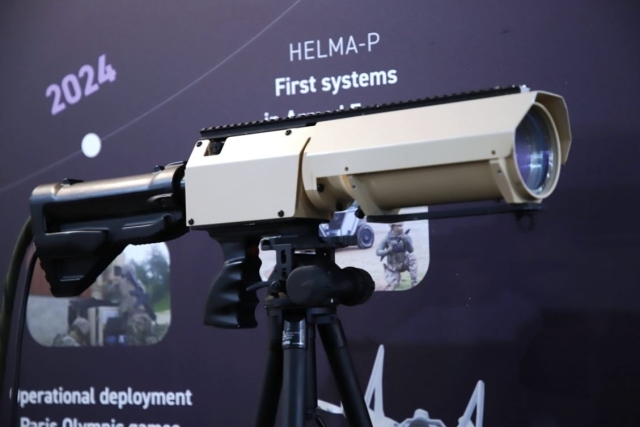
India Tests Laser Weapon for Aerial Defense
India has also entered the laser arms race, with the Defence Research and Development Organisation (DRDO) testing a 30-kilowatt laser weapon system in April 2025. Designed to counter drones and other aerial threats, this system destroyed a fixed-wing drone during the test. Capable of being mounted on both land and naval platforms, the laser weapon has an effective range of 5 kilometers and features a 360-degree electro-optical/infrared (EO/IR) sensor, which provides enhanced tracking and targeting capabilities.
The DRDO is already working on an even more powerful system, the Surya, with a 300-kilowatt laser and a 20-kilometer range for engaging faster-moving threats.
QinetiQ and Australia’s Directed Energy Push
Australia is also exploring the use of directed-energy weapons, with QinetiQ testing a high-power laser optical chain in March 2025. In collaboration with the Defence Science and Technology Group (DSTG), QinetiQ aims to develop a sovereign laser system to counter drone threats in the Australian defense sector. The first prototype is expected by mid-2025, and the project is seen as a key part of Australia’s strategy to integrate emerging technologies into its defense capabilities.
QinetiQ’s work on scalable, high-power lasers could offer a cost-effective alternative to traditional counter-drone systems, providing the Australian Defence Force with a precision tool for neutralizing UAVs. The project leverages expertise from the U.K.’s DragonFire program, a well-known initiative in the field of directed energy weapons, further strengthening the growing global collaboration on laser technology.
Laser Weapons in the Sky and on the Ground
As lasers become more compact and powerful, they offer several advantages over traditional kinetic weapons. These include lower operational costs, faster reaction times, and the ability to engage multiple threats without the need for costly ammunition.
Countries like Israel, the U.K., and Germany are already deploying or testing their own laser systems. Israel’s Iron Beam, for example, is expected to be operational by 2025 and will complement the Iron Dome missile defense system. The Iron Beam is capable of intercepting rockets, drones, and mortar shells, offering a cost-effective solution to the increasing threat posed by low-cost aerial systems.
In the coming years, we can expect to see more nations integrate laser systems into their military arsenals. Whether mounted on drones, ships, or vehicles, these weapons will provide the next generation of defense, offering a more efficient, cost-effective way to neutralize threats on the battlefield.
